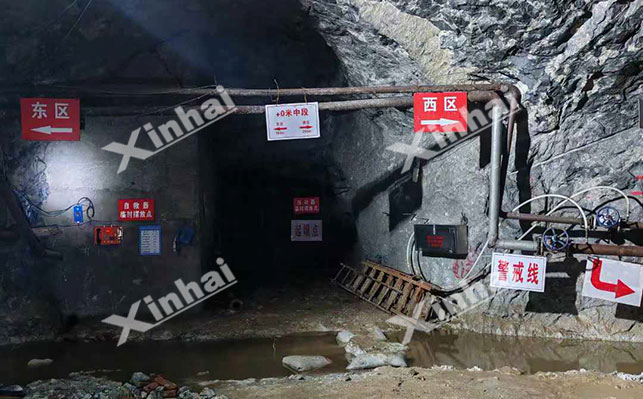
15311826613
Click to add WeChatMica is a layered hydrous aluminosilicate mineral containing various elements such as potassium, aluminum, magnesium, iron, and lithium. It has applications in numerous industrial fields, from being an insulating base in the electrical and electronic industries to a reinforcing agent in plastics and rubber, and a core raw material for pearlescent pigments. With technological development and industrial progress, the demand for mica continues to rise. How to efficiently, safely, and environmentally friendly mine and beneficiate mica is a focus of research in the mining field. This article provides a detailed introduction to mica mining and beneficiation.
The mining methods for mica need to be selected based on the deposit type, occurrence state, and ore characteristics. The main mining principle is "protecting the integrity of mica crystals," prioritizing mining methods that minimize ore disturbance. Currently, there are two main categories: open-pit mining and underground mining.
Open-pit mining is suitable for shallow mica deposits where the ore body is exposed at the surface or has a thin overburden, especially the shallow ore bodies of pegmatite-type mica deposits. The process is as follows:
Stripping the Overburden: Bulldozers and excavators are used to remove the topsoil, weathered layers, etc., above the ore body to expose the underlying mica ore body. During stripping, if the overburden contains a small amount of mica, simple methods such as screening can be used for recovery to improve resource utilization.
Ore Body Mining: For pegmatite ore bodies with good integrity, shallow-hole blasting is used. Blasting parameters must be strictly controlled to avoid mica flakes breaking due to blasting vibration.For loose or severely weathered ore bodies, excavators and loaders are used for direct mining, supplemented by manual sorting to first select large mica flakes with a diameter ≥4cm, ensuring the recovery of high-value products.
Ore Processing: After mining, the ore is first screened and graded to remove waste rock, and then the mica-bearing ore is transported to a concentrator for further processing. Open-pit mines must be equipped with drainage systems to prevent rainwater erosion and ore pile collapse.
Underground mining is suitable for mica deposits that are deeply buried (overburden thickness >20m), have complex ore body shapes (such as veins or lenses), or where surface excavation is not permitted. There are several methods for underground mining, including the following:

Shallow Hole Deposit Method: Suitable for mica deposits with a thickness of 1-5m, a dip angle >60°, and stable surrounding rock (such as pegmatite vein-type mica deposits). This method mainly involves mining in layers from the bottom of the ore body upwards, with each layer set at a height of 2-3m. Shallow hole blasting is used, with holes 1.5-2m deep to break down the ore. The ore then slides to the bottom extraction point by its own weight. During the mining process, 10%-15% of the ore needs to be left as pillars to support the roof and maintain the stability of the stope, allowing for subsequent extraction of mica from the pillars. Manual sorting should be carried out promptly after blasting to prevent mechanical operations from breaking the mica.
Room and Pillar Method: Suitable for mica deposits with a thickness of 3-10m, a dip angle<30°, and moderately stable surrounding rock (compressive strength 30-60MPa). The ore body is divided into rooms and pillars, with rooms typically 5-8m wide and pillars 3-5m in diameter, spaced alternately. Rock drills are used to blast the ore within the rooms, and loaders work with small mining cars to extract the ore. This method has a small exposed roof area, with each room typically less than 500㎡, offering high safety and well-suited for recovering mica from horizontal or gently dipping ore bodies.
Backfill Mining Method: Suitable for deep ore bodies, fractured surrounding rock (compressive strength<30MPa), or situations requiring strict surface protection. A phased mining method is adopted. After each segment is mined, the goaf is immediately backfilled with waste rock, tailings, or cementing materials. This effectively controls ground pressure and reduces the damage to mica from roof collapse.
The above are some common mica mining methods. Generally, open-pit mining is used for shallow ore bodies, while shallow-hole casting or room-and-pillar methods are used for deep, stable ore bodies. Backfilling methods are used under complex conditions. Xinhai has extensive experience in mica mining, possessing a Class A qualification for general contracting of mining engineering construction. It can provide services for all types of mica mines across all stages, including E, P, C, M, and O, namely, mine technical consulting and experimental research and design, complete equipment manufacturing and procurement, engineering construction, installation, commissioning and delivery, mine construction management, mine production operation management and services.